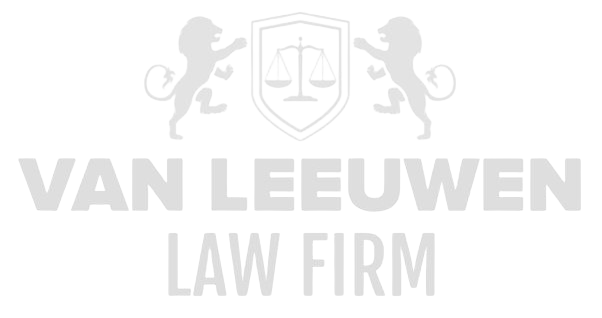In today’s boardrooms, a phenomenon unfolds that is as subtle as it is destructive: the insidious undermining of cognitive faculties by technology. This is not an operational issue to be dismissed lightly; it strikes at the very core of decision-making authority, of the moral and strategic autonomy that has long formed the foundation of executive leadership. In an era where algorithms not only support decisions but increasingly dictate and determine them, the traditional power of human judgment threatens to fade. The risk is far from theoretical; in scenarios involving allegations of financial mismanagement, money laundering, or violations of international sanctions, reliance on technology can erode the sense of responsibility and foster blind trust in systems designed to control yet equally capable of manipulation. It is an age in which the digital mirror reflects the true nature of leadership while simultaneously distorting it.
The implications for the C-suite are profound and alarming. Decisions once grounded in meticulous consideration, legal scrutiny, and strategic instinct are increasingly filtered through algorithmic logic that appears objective but in reality mirrors the biases of its creators or the directives of those who commission it. The boundary between independent judgment and technological suggestion blurs at a dangerous pace. When contexts unfold around allegations of fraud, corruption, or sanctions violations, there is no margin for error: every misinterpretation, every uncritical acceptance of automated advice can result in catastrophic legal and reputational consequences. In this critical nexus, the loss of cognitive autonomy is no longer an abstract notion; it becomes an instrument of potential self-destruction for those who assume that control resides solely in technological instruments.
The Temptation of Algorithmic Authority
In boardrooms, the allure of algorithmic authority is both subtle and irresistible. The promise of efficiency, objectivity, and speed cultivates the illusion of perfection, while the human critic is sidelined, dismissed as a source of delay or error. Yet behind this façade lies a dependence with potentially devastating consequences when an organization faces legal inquiries or allegations of financial mismanagement. Every algorithm, no matter how advanced, reflects the choices of its designers and the limitations of its training data. When decisions with direct implications for compliance, sanctions, or the prevention of financial fraud are delegated to these systems, a dangerous symbiosis emerges: human passivity combined with the seeming objectivity of technology, resulting in a disappearance of personal accountability and the accumulation of risk in a subtle, often invisible, dynamic.
This dependence is cumulative. Executives become accustomed to the convenience of automated detection of suspicious transactions or risky contracts, gradually losing the ability to discern patterns that cannot be neatly captured in data frames or dashboards. The cognitive sharpness necessary to unravel complex money-laundering structures, bribery schemes, or international sanctions violations is hollowed out. Instead of remaining alert and critically analytical, executives are seduced into mechanical reliance on warnings and recommendations that may appear superficially accurate but can be strategically misleading. The danger lies in the slow erosion, not in a sudden disaster: a process whose full consequences only reveal themselves when legal realities pierce the technological illusion.
The implications extend beyond individual error. When top executives surrender judgment to systems designed to minimize risk, a culture of delegated responsibility takes root. In scenarios involving international sanctions or corruption investigations, this culture can produce strategic blind spots: decisions are made without full comprehension of moral or legal consequences, leaving the organization exposed to liability of a magnitude difficult to grasp. Technology transforms from a tool to a shield, but this shield can just as easily become a leaden weight when external forces, such as regulators or investigators, exert their scrutiny on the fragile structures of accountability and ethics.
The Loss of Strategic Judgment
The erosion of strategic judgment due to technological reliance is a largely overlooked yet critical risk. In organizations handling complex, cross-border financial transactions, intuitive and legally grounded judgment is essential to detecting misconduct such as fraud or money laundering. Technology can never fully capture the nuance and context that human experience provides. Blind adherence to system-generated alerts or predictions without the interpretive skill that distinguishes seasoned leadership is a recipe for executive failure. Decisions once rooted in comprehensive analysis are reduced to reactive measures based on algorithmically generated data, with the risk that subtle signs of illegal activity or ethical breaches go unnoticed.
Moreover, reliance on technology cultivates a psychological trap: false confidence. Leaders may wrongly assume that the system detects and corrects errors or violations, while in reality blind spots remain. This illusion of control is particularly perilous in legal contexts, where any oversight may be construed as negligence or, worse, complicity. In cases involving international corruption, financial fraud, or sanctions violations, this illusion can result in personal liability and irreparable reputational harm. The human judgment capacity, once the anchor of responsible leadership, is slowly replaced by mechanical authority devoid of moral comprehension.
The erosion of strategic insight also constrains proactive risk mitigation. Instead of analyzing scenarios, reviewing risk portfolios, and exploring alternative strategies, decision-making becomes mechanical and reactive. This mechanism increases the likelihood that financial misconduct, dubious reserves, or sanctions-avoidance structures remain undetected until crisis strikes. The cumulative effect is an organization that appears externally compliant yet is internally fragile and exposed to legal and financial catastrophe, where the failure of cognitive autonomy directly mirrors the failure of ethical, legal, and strategic responsibility.
Moral and Legal Implications of Technological Dependence
Technological dependence carries profound moral and legal consequences. In boardrooms where oversight of financial integrity is critical, blind trust in systems can result in implicit complicity with illegal activity. When algorithms monitor transactions or propose decisions, human failure to critically assess is not merely an error; it is a moral void that can be exploited in legal proceedings. In cases of fraud, corruption, or sanctions violations, every executive action is scrutinized, with the question posed: why was human judgment not applied? The implication is devastating: reliance on technology may be interpreted as negligence, or worse, as facilitation of unethical or illegal behavior.
The legal consequences are substantial. National and international regulators and investigators are acutely aware of the limits of technology. In criminal and civil contexts, the absence of independent, informed oversight can result in executive liability, regardless of intent. The argument that an algorithm guided a decision provides no immunity; personal responsibility for adequate supervision remains paramount. In the context of international sanctions or anti-money laundering enforcement, failure to exercise critical evaluation is concrete evidence of negligence, potentially resulting in heavy fines, reputational damage, or criminal prosecution.
Morally, this dependence undermines the ethical core of leadership. Decision-making authority is not solely a legal or operational matter; it embodies integrity, judgment, and accountability. By surrendering cognitive autonomy, the moral compass of an organization is weakened. In scenarios involving financial fraud, corruption, or sanctions violations, the loss of this compass is not hypothetical: it lies at the heart of failures that provoke regulatory sanctions, investigations, and reputational ruin. Technology can assist, but never replace; the line between tool and master is the difference between strategic control and legal and moral collapse.
Culture of Passivity and System Dependence
The gradual erosion of cognitive autonomy fosters a culture of passivity at the highest levels of organizations. When executives rely on technology to signal risks, perform analyses, and monitor compliance, structural dependence develops that undermines the activating force of critical thought. In situations requiring complexity and nuance, such as detecting money-laundering structures, identifying bribery, or ensuring adherence to international sanctions, this passivity can have catastrophic consequences. Organizations develop reactive decision-making patterns in which signals not captured fully in data are ignored or overlooked.
This culture perpetuates itself as junior leaders mimic senior executives’ behavior. When role models exhibit blind trust in systems rather than exercising judgment, an institutional behavioral norm emerges in which human responsibility is devalued. The result is a chain of decisions based purely on mechanical compliance rather than strategic consideration, leaving organizations exposed to risks of financial mismanagement, fraud, and sanctions violations. The cumulative impact is an entity that appears externally sound but internally fragile, vulnerable to legal and financial crises.
Furthermore, such a culture renders organizations susceptible to external manipulation. Technology can be manipulated, data distorted, and algorithms designed with blind spots that expose the organization financially or legally. In board contexts where international sanctions, fraud investigations, or corruption inquiries are at play, this risk is concrete. The very system intended as protection can serve as a tool of vulnerability. Only leadership that is critical, independent, and morally grounded can counter the cumulative threat of this dependence and prevent the organization from falling into a trap of passive complicity.
Restoring Cognitive Autonomy as a Strategic Weapon
Restoring cognitive autonomy is not merely a matter of individual discipline; it is a strategic weapon in combating financial, legal, and ethical vulnerability. Cultivating leadership that is independent, critical, and systematically analytical restores the capacity to detect, distinguish, and respond to signs of fraud, corruption, or sanctions violations. This demands a radical revaluation of human judgment, where technology is recognized as a support, never a replacement. Only by centering the human factor can organizations protect their integrity and strategic resilience against both internal and external threats.
This revaluation necessitates a culture of vigilance and ongoing education. Executives must actively sharpen their cognitive faculties and strategic judgment, capable of interpreting data, weighing risks, and making decisions that are legally and morally defensible. It is a struggle against the allure of convenience and mechanical certainty; a struggle that cannot be outsourced. In the context of international financial regulation, anti-corruption measures, and sanctions compliance, this capability is not optional; it is fundamental for organizational survival and protection of personal and institutional reputation.
The ultimate aim is a governance structure in which technology serves as an instrument of enhancement, not substitution. By restoring cognitive autonomy, executives can anticipate risks, manage crises proactively, and cultivate an organization resilient to legal, financial, and ethical storms. In an era where system dependence can mask leadership weaknesses, sharp, independent, morally grounded judgment forms the final bastion against the creeping threats of mismanagement, fraud, and sanctions violations. Only leaders who maintain this autonomy can safeguard their organizations from the devastating forces of both internal and external risk.









